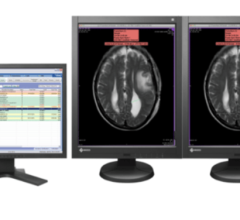June 19, 2013 — Alzheimer’s disease has been linked in many studies to amyloid plaque buildup in the brain, but new research is finding a common thread between amyloid burden and lower energy levels, or metabolism, of neurons in certain areas of the brain associated with Alzheimer’s disease — even for people with no sign of cognitive decline. This is a new development in the understanding of Alzheimer’s pathology, say neuroscientists presenting the research at the Society of Nuclear Medicine and Molecular Imaging’s 2013 Annual Meeting.
“This study shows that there is an association between hypometabolism and amyloid in the brains of normal people,” said Val J. Lowe, M.D., a professor of radiology at Mayo Clinic Cancer Center based in Rochester, Minn. “Previous studies indicate that hypometabolism of this same pattern is present in patients who have abnormalities of the gene apolipoprotein E, or APOE. The hypothesis is that people who have these genetic abnormalities tend to have hypometabolism and are on the trajectory toward developing Alzheimer’s disease. Hypometabolism does appear to be an early harbinger of the disease before dementia sets in.”
The research is a part of a longitudinal multi-phase study called the Mayo Clinic Study of Aging, which includes 2,500 patients with 4,000 projected for the next phase. For this imaging study, 617 cognitively normal subjects underwent two separate positron emission tomography (PET) procedures, a molecular imaging technique that visualizes physiological processes in the body. Each subject was imaged with an amyloid-binding radionuclide imaging agent, C-11 Pittsburgh compound B (PiB), produced on-site at the Mayo Clinic. An hour later, all patients were imaged again using the same scanner and a different radionuclide agent, F-18 fluorodeoxyglucose (FDG), which shows up on scans as hot-and-cold spots according to metabolic brain cell activity.
Results were then analyzed via quantitative analysis and reviewed. Researchers found significant hypometabolism in brain regions classically associated with Alzheimer’s disease, including the angular gyrus and posterior cingulate. Even the PiB PET scans that were deemed barely positive for amyloid were partnered with FDG PET scans that showed corresponding hypometabolism.
For more information: www.snmmi.org


 April 10, 2024
April 10, 2024 








